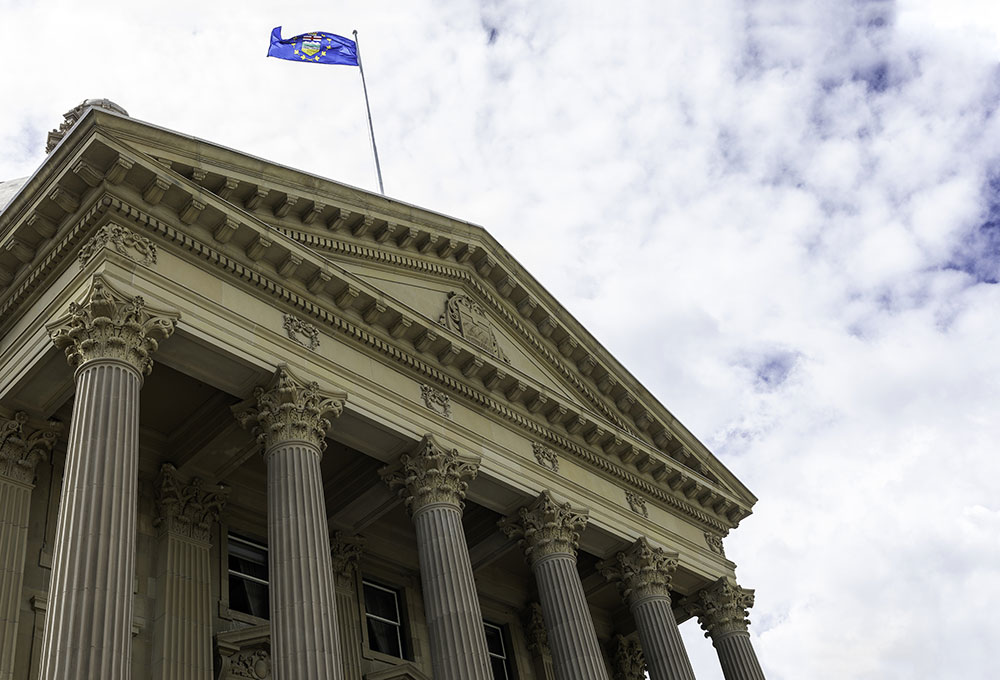
Alberta braces for further changes to OH&S legislation
November 16, 2020
By
Loretta Bouwmeester
Ensuring Safety and Cutting Red Tape Act passes first reading

Occupational health and safety legislation is once again under the microscope of the Alberta legislative assembly. (Rita Petcu/Adobe Stock)
What is old is not necessarily new again.
But changes to occupational health and safety legislation in Alberta are very likely coming (again!) and will be in force on Sept. 1, 2021.
Bill 47: Ensuring Safety and Cutting Red Tape Act passed first reading on Nov. 5.
Since 1976, Alberta’s Occupational Health and Safety Act (OHSA) has been amended 11 times, with the most substantial changes implemented in June 2018 under Alberta’s former New Democratic Party (NDP) government.
The United Conservative Party (UCP) has acted upon the public feedback it solicited over the summer about ways to protect workers, while reducing the administrative burden for business and employers — something that is fundamentally important for the viability of employer enterprises (and for their workers to have jobs).
The UCP changes are just as sweeping as the NDP’s, if not more so.
Employers welcome review
The review was a welcome process for Alberta employers who have experienced practical and administrative challenges working within the parameters of the current OHSA for more than two years.
The areas that have been changed align with the key areas that were reviewed, rectifying some of the main issues many employers have faced.
These are some of those key changes:
Joint health and safety committees (JHSCs) and representatives
Most prescriptive requirements are removed, including with respect to training, size and who must be included (though employer representatives cannot outnumber workers). There is also flexibility to be added for multi-employer worksites, also in terms of the information that has to be provided.
Now, only information related to “worksite hazards, controls, work practices and procedures” has to be provided to committees and representatives (in addition to all workers), instead of all health and safety information.
JHSCs also are not required to carry out worksite inspections, but only to review the employer’s documentation related to inspections. Also key is that JHSCs clearly will not be required to be included in worksite investigations.
There are also no longer minimum hours of paid training that employers need to provide workers with, though meetings need to take place during the paid workday.
Refusing unsafe work
This returns to being a worker obligation, and based on undue hazards — which are hazards that pose a serious and immediate threat, instead of the broader “dangerous conditions.”
Instead of no discriminatory action being allowed against a worker, no disciplinary action can be taken for legitimate refusals. All that OH&S should look at is whether disciplinary action has been taken.
Near misses and potentially serious incidents (PSIs):
There will be a requirement to investigate — but not report — any incident that “had a likelihood of causing serious injury or illness” and where there is “reasonable cause to believe that corrective action may need to be taken to prevent recurrence.”
Given the nature of COVID-19 and reality of widespread community transmission, this is how we are currently recommending that most COVID-19 positive worker cases be handled.
Health and safety program elements
Rightfully, these are no longer as prescriptive. All explicit requirements are removed, other than a program being required for a workplace with 20 or more (regularly) employed workers.
Workplace responsibilities and parties changes
- Employers: no longer responsible for same explicit (and confusing) scope, as “physical, psychological and social well-being” will be removed from the definition of health and safety. They now are only responsible for more sensibly having to make reasonable efforts to ensure the “health, safety and welfare” of persons in the vicinity of the worksite who may be affected by hazards originating from the worksite. Employers will no longer have to pay workers’ wages while a stop-work or stop-use order is in effect.
- Independent contractors: they are now employers with employer obligations, instead of workers. This changes the liability framework significantly and puts a higher burden on independent contractors to be responsible for their own health and safety.
- Contracting employers: this is the proposed new term for contractors, who must now ensure that the owner and any employer, prime contractor, and supplier/others is informed of any existing or potential worksite hazards that may affect others at the worksite.
- Workers: are explicitly required to participate in training provided by employers and to not do work they are not competent to do unless directly supervised by someone who is. This properly reinstates responsibility on workers to only do work they can safely do.
- Supervisors: removes their responsibility to ensure their own competency and returns this, in effect, to an employer responsibility.
- Prime contractors: now there will be legislated definitions for a “construction worksite” and an “oil and gas worksite.”
Stay tuned for further analysis on the final legislation, as it could still be amended before it is passed.
Loretta Bouwmeester is a partner with Mathews Dinsdale in Calgary and Vancouver.